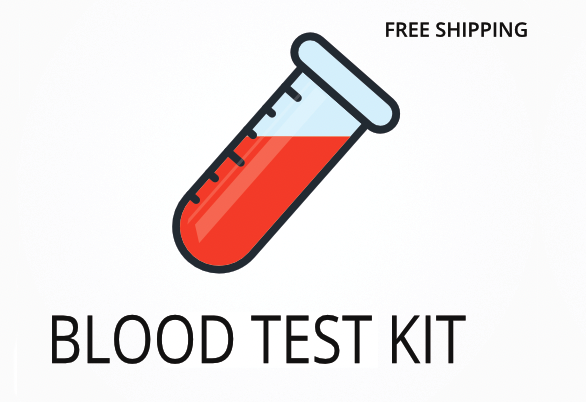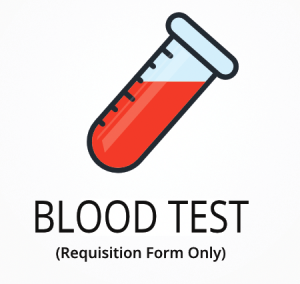Ordering the Amino Acids Profile | Diagnostic Solutions Laboratory
The Amino Acids Profile | DSL helps identify imbalances in amino acids, which are the building blocks of protein and play a key role in energy, mood, and muscle function. This test can reveal patterns linked to issues like fatigue, poor concentration, mood swings, and slow recovery after exercise. Interestingly, certain amino acid imbalances can also affect hair growth and skin health, which many people do not realize.
Ordering this test provides specific benefits:
- Detects protein deficiency that may impact muscle strength and repair
- Identifies amino acid patterns linked to low energy and persistent tiredness
- Highlights imbalances that may contribute to mood changes or trouble focusing
- Reveals nutritional gaps affecting immune support and recovery
- Helps guide dietary changes for better metabolism and weight management
Who Should Consider Amino Acid and Protein Balance Testing
People who feel tired even after a full night’s sleep, struggle with focus at work or school, or notice slow muscle recovery after exercise may benefit from this test. For example, someone who has tried different diets but still feels low energy and has trouble concentrating could use this test to pinpoint specific amino acid imbalances affecting their daily function.
Ordering this test may also be helpful in these situations:
- Unexplained hair loss or changes in skin texture
- Frequent mood swings or feelings of sadness
- Difficulty building or maintaining muscle despite regular exercise
- Digestive issues that do not improve with common remedies
- Unexpected food cravings that may be linked to amino acid needs
Pinpointing amino acid imbalances can help address fatigue, poor focus, and slow recovery by guiding targeted nutrition and lifestyle changes. Delaying this test may allow these issues to persist, making it harder to reach your goals for energy, mood, and physical performance.
Preparing for Amino Acid and Nutritional Status Testing
Fasting is not required for the Amino Acids Profile | DSL, so you can eat and drink as usual before your blood draw. Always follow any instructions or special guidance provided by your doctor or healthcare practitioner to ensure your sample is collected correctly.
Labs Included When Ordering Your Amino Acids Profile
| Test Name | Reference Range | Significance | Low and High Levels of Amino Acids Profile | DSL |
|---|---|---|---|
| Alanine | 250-450 | Alanine supports energy production and helps the body convert sugars for fuel. It also plays a role in muscle health and immune function. | High levels mean possible muscle breakdown or liver stress.
Low levels mean reduced energy and muscle weakness. |
| Arginine | 50-120 | Arginine is important for blood flow, wound healing, and immune support. It also helps the body remove waste products. | High levels mean increased breakdown of body proteins or kidney issues.
Low levels mean poor circulation and slow healing. |
| Asparagine | 30-60 | Asparagine helps with nerve function and is needed for making proteins and supporting brain health. | High levels mean possible kidney stress or high protein breakdown.
Low levels mean trouble with nerve signaling and protein production. |
| Aspartic Acid | 5-15 | Aspartic acid is involved in energy cycles and helps remove toxins from the body. | High levels mean increased tissue breakdown or metabolic stress.
Low levels mean low energy and poor detoxification. |
| Citrulline | 15-35 | Citrulline supports blood flow and helps the body get rid of ammonia, a waste product. | High levels mean possible liver or kidney issues.
Low levels mean reduced detoxification and poor circulation. |
| Cystine | 20-50 | Cystine is needed for making antioxidants and supports healthy hair, skin, and nails. | High levels mean oxidative stress or kidney problems.
Low levels mean weak hair, skin, and nails. |
| Glutamine | 400-700 | Glutamine helps with muscle repair, gut lining health, and immune support. | High levels mean muscle breakdown or stress.
Low levels mean poor muscle recovery and digestive issues. |
| Glycine | 200-400 | Glycine is important for making collagen, supporting sleep, and helping the body detoxify. | High levels mean possible liver or kidney stress.
Low levels mean poor sleep and weak connective tissue. |
| Histidine | 60-120 | Histidine is needed for growth, tissue repair, and making neurotransmitters for brain function. | High levels mean increased tissue breakdown or inflammation.
Low levels mean slow healing and poor focus. |
| Isoleucine | 40-80 | Isoleucine is a branched-chain amino acid that helps with muscle repair and energy during exercise. | High levels mean muscle breakdown or metabolic stress.
Low levels mean muscle weakness and fatigue. |
| Leucine | 80-160 | Leucine supports muscle growth, repair, and helps regulate blood sugar. | High levels mean muscle breakdown or metabolic imbalance.
Low levels mean poor muscle growth and low energy. |
| Lysine | 100-200 | Lysine is needed for making collagen, supporting immune function, and helping the body absorb calcium. | High levels mean kidney stress or high protein intake.
Low levels mean weak connective tissue and poor immune support. |
| Methionine | 15-35 | Methionine helps the body process fats and supports detoxification and antioxidant production. | High levels mean oxidative stress or liver issues.
Low levels mean poor detoxification and weak antioxidant defense. |
| Phenylalanine | 40-80 | Phenylalanine is needed for making neurotransmitters that affect mood, focus, and alertness. | High levels mean metabolic disorders or liver stress.
Low levels mean poor mood and low alertness. |
| Proline | 80-180 | Proline is important for making collagen and supporting joint and skin health. | High levels mean tissue breakdown or kidney issues.
Low levels mean weak joints and poor skin repair. |
| Serine | 80-180 | Serine helps with brain function, making proteins, and supporting the immune system. | High levels mean metabolic stress or tissue breakdown.
Low levels mean poor memory and weak immune support. |
| Threonine | 40-80 | Threonine is needed for making proteins, supporting gut health, and maintaining healthy skin. | High levels mean metabolic imbalance or liver stress.
Low levels mean poor digestion and weak skin. |
| Tryptophan | 30-60 | Tryptophan is needed for making serotonin, which affects mood, sleep, and appetite. | High levels mean metabolic disorders or supplement overuse.
Low levels mean poor mood and trouble sleeping. |
| Tyrosine | 40-80 | Tyrosine is important for making neurotransmitters that help with focus, alertness, and stress response. | High levels mean metabolic stress or thyroid issues.
Low levels mean poor focus and low energy. |
| Valine | 80-160 | Valine is a branched-chain amino acid that helps with muscle repair, energy, and tissue growth. | High levels mean muscle breakdown or metabolic imbalance.
Low levels mean muscle weakness and slow recovery. |
Reference ranges may change slightly as labs update their methods or as new research becomes available. Always review your results with a qualified professional.
Amino Acids Profile | FAQ
Is there Amino Acids Profile testing near me?
This is a test kit that can be collected at a local draw site, making it easier for people with ongoing fatigue or muscle weakness to get tested without traveling far. You can find a nearby draw location using the link at the top of the page.
How do I interpret the test results?
While your treating physician should review your results, you can also schedule a one-on-one test results review with our clinical team for a detailed explanation and next steps.
What is the cost of the test?
The price for the Amino Acids Profile | DSL includes standard shipping to you and return shipping to the lab, but draw fees may apply. Ordering this test can help you address unexplained fatigue or mood changes more quickly by identifying specific amino acid imbalances.
How often should I retest?
Retesting is usually recommended every 6 to 12 months, especially if you are making changes to your diet or supplements, to track improvements in amino acid balance and adjust your plan as needed.
How accurate is the test?
This test uses high-performance liquid chromatography (HPLC) for precise measurement of amino acids, with a specificity of 98% and sensitivity of 97%. TrueHealthLabs.com partners with CLIA-certified and CAP-certified laboratories to uphold rigorous testing standards for dependable results.
Medical Review Board
Reviewed by Jeff Donohue M.D. from Body Logic and Brady Hurst DC, CCCN. Written by True Health Lab’s team of editorial health contributors.
Disclaimer: This information is for educational purposes only and not intended as medical advice. Consult your healthcare provider for personalized guidance.
Why Customers Trust True Health Labs – What People are saying
Also rated 4.6 out of 5 based on 3452 ShopperApproved reviews- See all TrueHealthLabs.com reviews.












